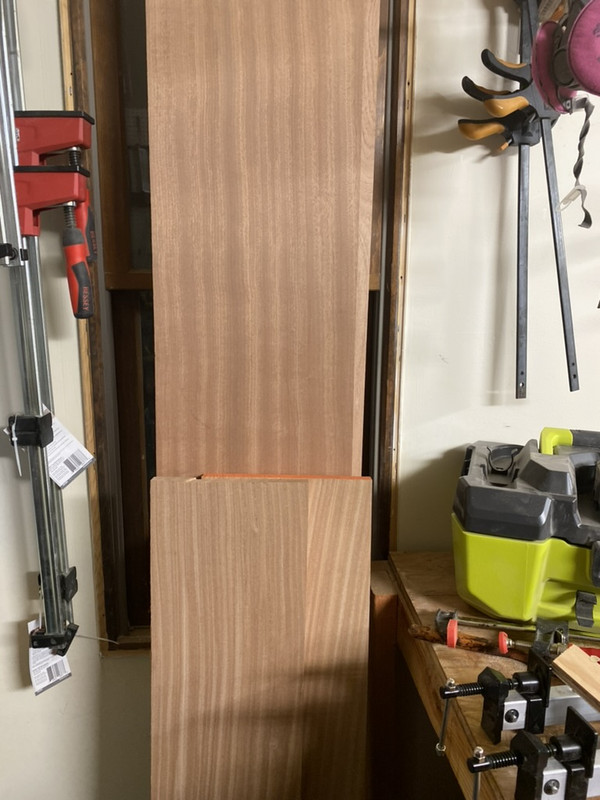
One of the first projects I wanted to do was replace the table on my live aboard Cheoy Lee trawler. It was a little too long and too wide. It had table leaves that I didn’t need, and there was no storage space in it.
On a trip to Beaver Tooth Oak found some beautiful sapele wood. Sapele is a great wood for furniture on a boat, because it is highly water resistant, which keeps it from warping. It is related to mahogany because and is native to Nigeria. It is beautifully iridescent.
I first milled the wood and cut it roughly to size. My plan was to make the table roughly 64 inches by 22 inches. I wanted to add drawers. Since it is on a boat it needs to be mounted to some fixed mounts rather than have legs.

Biscuit joinery is a process of cutting out grooves within the wood and glueing a small piece of wood (i.e. a biscuit) in the middle of it. While biscuit joinery has some detractors because it isn’t that strong, it does help a lot with alignment.
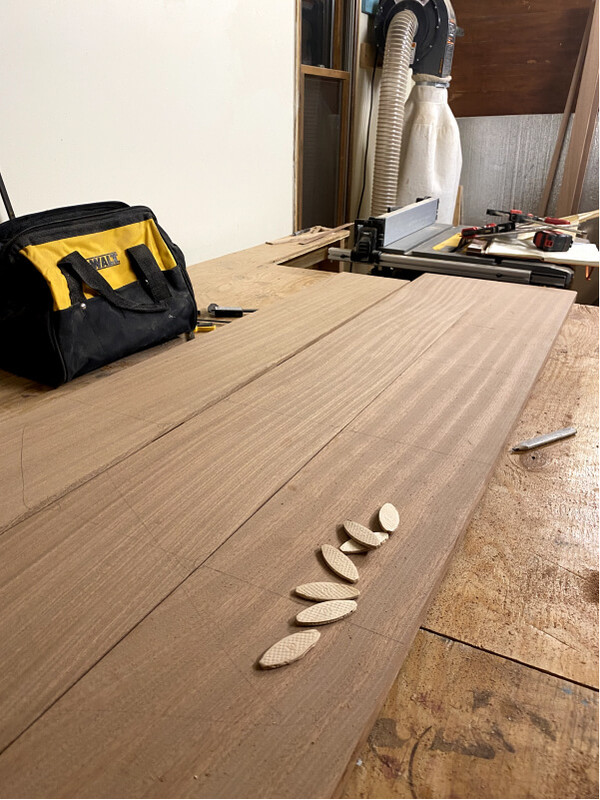
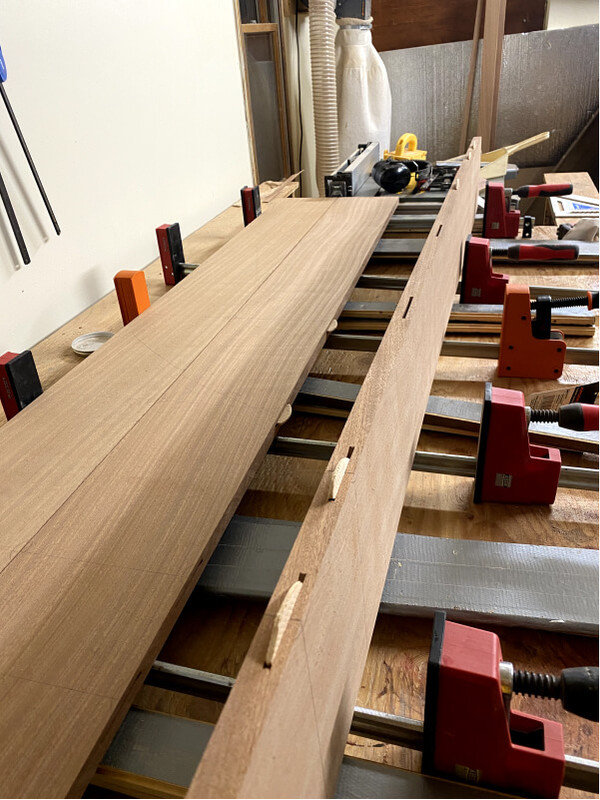
The saying goes “You can never have too many clamps”. If you know a woodworker, just get them clamps for Christmas and call it a day. I used literally all of my clamps and could have used more. I beyond needing to glue up the table top surface, I also used a lot of cauls which helps to make sure everything is properly aligned.
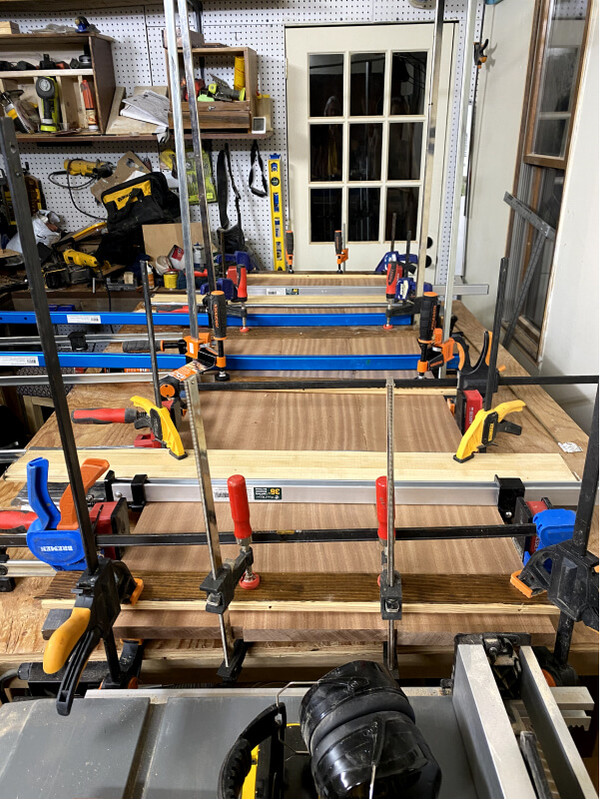
To assemble the base I used by dovetail jig to create half blind dovetails. Dovetails are a strong and aesthetically pleasing form of joinery. I’ve experimented with doing them the old fashioned way, by hand, and I just don’t have the patience or precision for them, therefore I use a jig with a router. In addition I used pocket holes to affix the supports for the drawers. Finally, I made some home made quarter rounds to sit atop the table. This is common on boats so that things don’t roll off surfaces while out at sea.
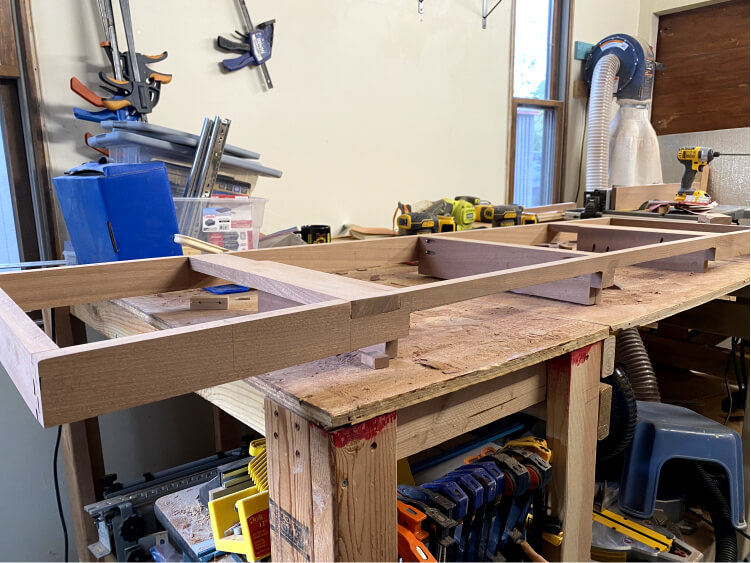
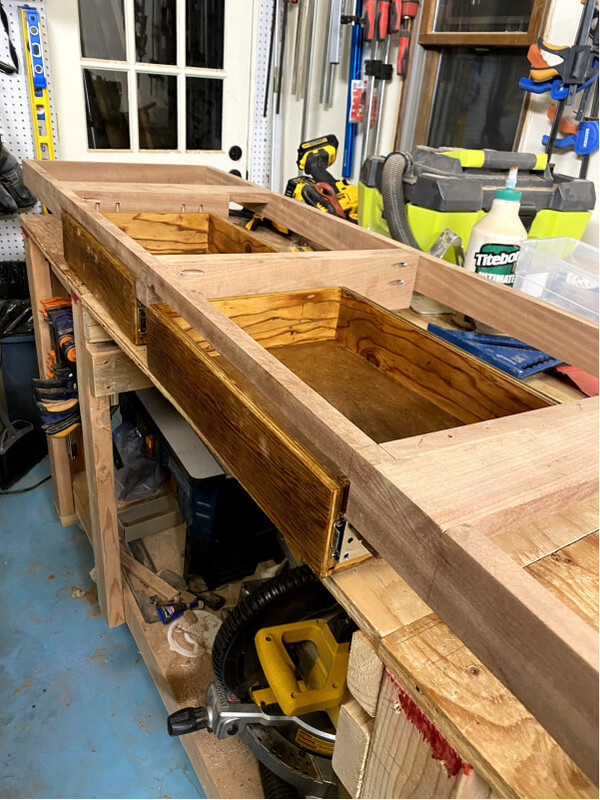
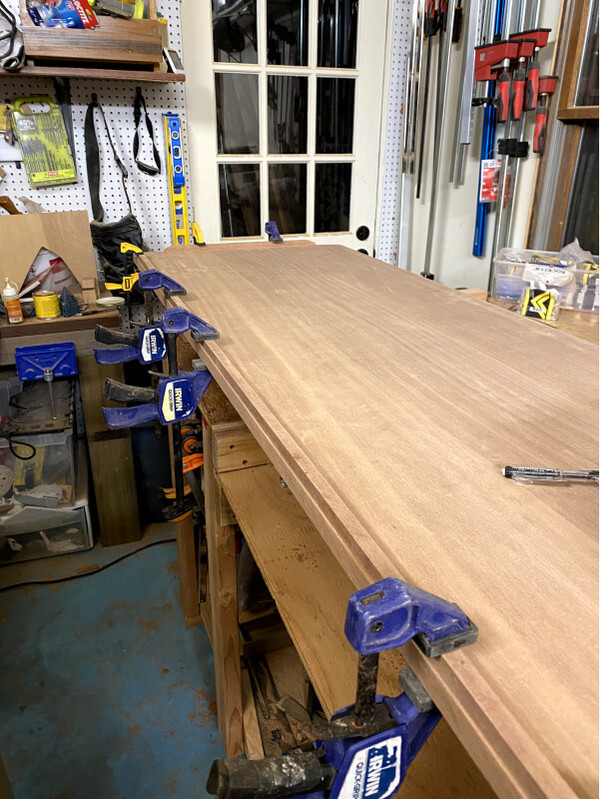
I’d been experimenting with finishing sapele on a few smaller projects and was inspired by these finishing techniques. I really like the mixture of sanding sealer and then an additional coat of a harder finish like lacquer or varnish. The sanding sealer evens out the pores of the wood and allows for a more uniform finish on the wood. After a lot of research I settled on Epifanes glossy varnish. While I really like the results, its hard to get varnish perfect and it takes at least 6 coats which can only be applied about once per day. I try to avoid varnish whenever possible but felt this was the most fitting method for furniture on my boat.
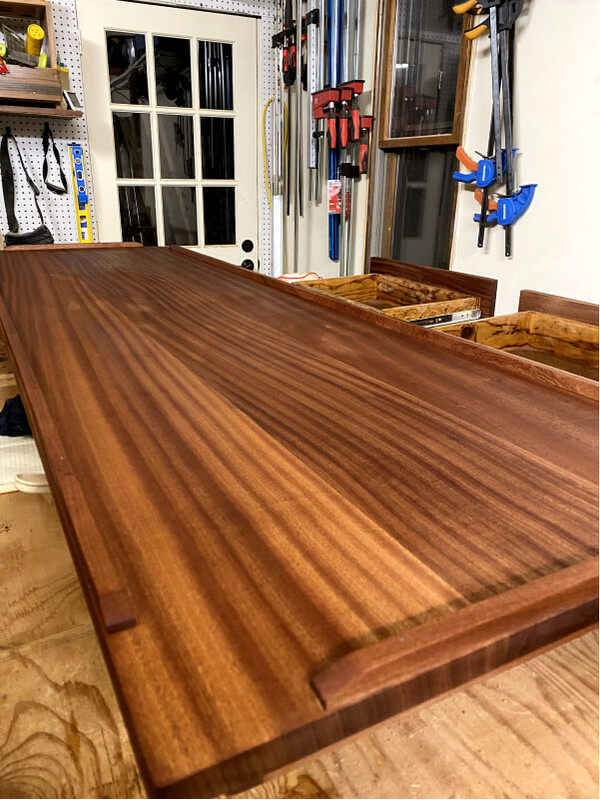


After finishing 6 coats of varnish it was time to install the drawers and later install the piece on my boat. I’m very pleased with the results!